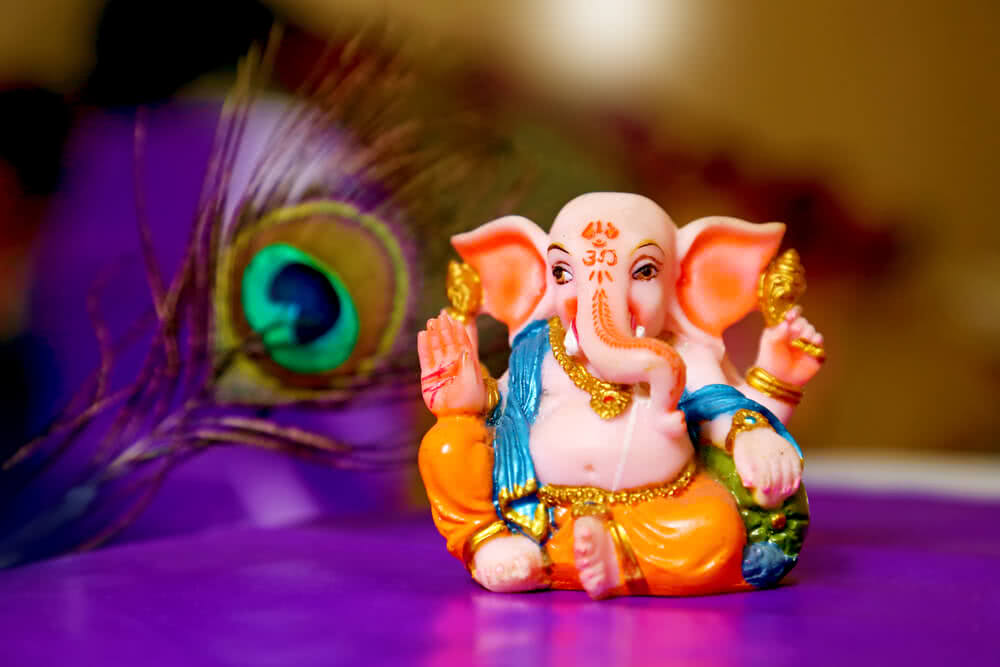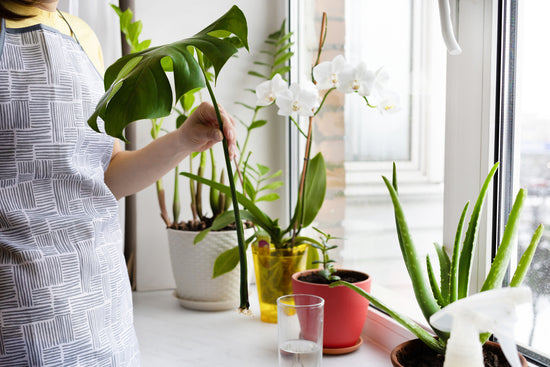Following are the scientific and local plant names of 21 leaves that are offered to Lord Ganesha!
1. Terminalia arjuna (Arjun/ अर्जुन)
A beautiful, indigenous, medicinal tree with simple, opposite, elliptic leaves.

2. Sesbania grandiflora (Agati/ हातगा)
A small, fast growing leguminous, native tree with compound leaves.
3. Achyranthes Aspera (Prickly Chaff Flower/ आघाडा)
An erect weedy herbaceous plant with simple medium sized leaves.
4. Nerium Indicum (Oleander/ कण्हेर)
An evergreen flowering shrub with dense foliage; commonly planted in gardens.5. Pandanus odoratissimus (Kewda/ केवडा)
A wild flowering perennial plant with long, strap like, leathery and aromatic leaves.
6. Jasminum auriculatum (Juhi/ जाई)
It is a stunning, small climbing bushy plant with simple, ovate, dark green small leaves.
7. Punica granatum (Pomegranate/ डाळिंब)
A small perennial bush with multiple stems and many small sized, ovate leaves.
8. Solanum indicum (Indian nightshade/ रानवांगं)
It is prickly, erect shrub with large, hairy leaves. Highly medicinal plant.
9. Cynodon dactylon (Bermuda grass/ दूर्वा)
The most popular grass species in India, it is known to be Lord Ganesha's favourite plant. Read more about Growing Doob Grass.
10. Cedrus deodara (Deodar/ देवदार)
The large, coniferous tree found in the Himalayas. Leaves are blue-green and needle like.
11. Ocimum sanctum (Holy basil/ तुळस)
The most popular medicinal and holy plant in India. Leaves are hairy and aromatic. Read more about How to Grow Tulsi plant, and Why do we Worship Tulsi.
12. Datura innoxia (Datura/ धोतरा)
A traditional medicinal plant. Hairy, grey leaves with silverish appearance.
13. Ficus religiosa (Holy Ficus/ पिंपळ)
A huge tree found all over India. Leaves are Heart shaped with tapering apex.
14. Aegle marmelos (Bel, बेल)
Another evergreen medicinal tree. Typical aromatic, compound leaves with three leaflets.
15. Ziziphus mauritiana (Ber, बोर)
This thorny, scanty tree a common sight in India. Dark green, shining leaves.
16. Origanum majorana (Marjoram, मारवा)
A bushy perennial herb. Leaves are highly scented known for their essential oils.
17. Eclipta erecta (False Daisy, माका)
A medicinal, erect annual herb is found naturally growing during Indian monsoon.
18. Jasminum sambac (मोगरा)
Extremely popular fragrant flowering plant common in Indian home gardens.
19. Evolvulus alsinoides (विष्णुकांत)
This is a very slender, spreading or ascending, usually extremely hairy herb.
20. Calotropis procera (Rubber bush, रुई)
A peculiar milkweed shrub with leathery opposite leaves filled with milky latex.
21. Prosopis spicigera (Khejri tree, शमी)
A moderate sized thorny tree with bluish green compound leaves. Read more about 10 Flowers for 10 days of Ganesh festival!
Happy Ganesh Chaturthi!













